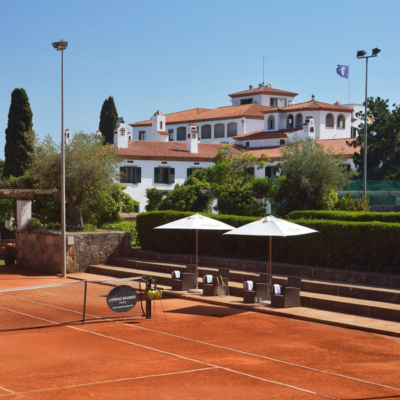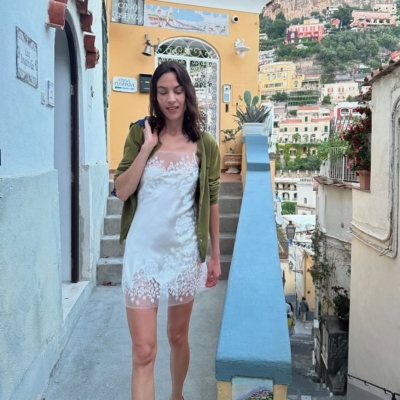I often find myself writing about my life in San Francisco as though it was a purer time, a less digital time: when in actual fact it was those three steep years that I think anchored me to the internet in a way that I worry is irreversible. But some of the first photos I posted on Instagram, just months after the iPhone was first a hard portal in my hand, are of zines that I made. A selfie at 23, my head half shaved, remaining hair red, wielding a large industrial stapler. My handwriting in Sharpie on the brown paper I used for my templates. A digital recording of a profoundly un-digital thing.
A zine is a hand-made, short run issue of a publication a person makes themselves, about whatever they want, in whatever style they want. They originated through science fiction and into punk: their aesthetic is one of glue and collage and photocopied monochrome. They have a look about them, a feel.
I first found zines in record shops in Dublin when I was a young teenager seeking out Jane’s Addiction’s back catalogue: crawling shops that reeked of incense looking for one CD in particular week after week. These were offline years. The zines I found were about mental health, or they were jokes, or they were short stories, or kind-of-essays with hand-drawn illustrations. There was one spot, a distro in Temple Bar, that stocked almost exclusively zines. They ran at a euro or two a pop. I kept them all in a box together and would read them every week with my friend Helena, sometimes aloud, marvelling at their existence, the mystery of them. Many were written pseudonymously. Where had they come from? Could we make one? The distro closed, the record shops changed, but zines were still around, if you looked hard enough.
The first place that ever published my writing was a zine called Oh, Francis. I was 19. It ran on newsprint in, if I remember correctly, pink ink. I will never forget how that felt. That first knowing that the things I wrote could be held in other people’s hands. A warmth, a rush – the beginning of a real hope that someday I could be a writer, for real.
I spent a lot of my time in San Francisco during that first helpless year, hand-assembling tiny zines, large zines, hauling myself to the print shop on Mission, stapling them together on the floor of our little apartment. The warmth of print-fresh paper, the ritual of the folding, the feeling of ink, the sound of the pages as they folded – how long it all took was an exercise in grounding. In 2012, phones that we look at like portals or mirrors were fresh things in the world. Mine had barely taken seed in my palm but I already felt an unease with the rush and numb it gave me. I knew that making my little zines was something real when, freshly emigrated, unemployed, broke and scared, I was feeling increasingly un-real. I know now that I relied on the internet to feel connected to the people in my life when they were across the planet: I know also that that was no good for me, for my relationships, for what would eventually turn into a huge disparity between the identity I present online and the person I am when you face me. The zines were tiny anchors I tried to use to keep myself steady. Heavy messages in bottles cast to the bottom of the sea – someone read me, find me. Does the reading of the things I write make me more real, I used to wonder, typing extended statuses into Facebook, waiting for the quiet dopamine rush of Likes. Were the zines just status-updates in paper, I used to wonder. An update in black ink on peach paper, lavender paper, bright, legal yellow.
It feels like the times before the internet grew into the shadow that runs concurrent to my life – it makes me feel like the internet holds potential for actual connection, not just potential for drain.
The distro I stocked them in was called Needles & Pins, and still exists between Guerrero and Valencia, on 23rd Street. I never felt cool enough to be in there, but they were kind to me when I showed up with my little packet of Wordfury zines. A poem in one about my new kitten, one about not being able to swim. One about anger. One of blackout poetry made from an Addams Family novella, one made from a bodice-ripper. Two dollars, three dollars. They all sold, they’re all somewhere, in some shoebox or other in America. A trace of who I was then. I still have the master prints in an album in a box, the original etchings, typos and all. I’m not even sure what I was trying to say in them, just something – just I am alive, I am here, please see me as more than a collection of pixels. As something real. I went to zine fairs on the west coast, I collected parts of other people, too.
Last week, I downloaded the Electric Zine Maker, by Natalie Lawhead. A desktop indie game that functions as an interface that allows the user to build a zine from scratch. I typed all my text in directly, drag and dropped the images I wanted to use, souped them up with a few effects then suddenly – was ready to go. The game looks like a technicolour educational CD-ROM from the first days of the home computer, it roars with bright blue and tiny endearing animations – the text instructions have a distinctive voice to them, a style. Using it feels more like play than work, by miles – so much so that in composing my first zine since 2013 I barely even noticed the time flash by me. It was a joyful experience: a tiny homage to a series of images I found online one evening – bananas carved into the shapes of dolphins. I asked Twitter, would you like one? Twitter said yes.
I went to the print shop the following day and reeled off 45 legal yellow pages, my favourite, and took them home. I don’t know of any distros left in Dublin, but surely now the internet is a limitless distro, isn’t it? While travelling for work, I set up a shop on my website and listed the zine for sale – it was called Peel Me. I sat at a desk in a hotel in Antwerp and tweeted that there were a limited amount of my weird zine for sale for a couple of euros. It is one page folded so that it becomes six pages, a simple thing, a bad origami almost.
Somehow, within two hours they were all gone. Orders from home, from Croatia, from Holland and England. I spent the following days folding them methodically – which is sometimes frustrating, I’m not as precise as I’d like to be, not a machine, just a pair of clumsy hands – numbering them, giving each a unique little sticker on one of the pages for a spot of bright colour, stapling them in the centre with that very same industrial stapler I brought all the way home from California. I placed them each in an envelope, addressed them all by hand. Something in me quietened with the task. I listened to music and watched my stacks grow and grow. Each a message in a bottle, an anchor – a secret for whoever reached out and met me, whoever let me have my own digital distro – whoever played along with my game. It feels transgressive, almost.
I will post them tomorrow, in the morning, a bulky stack of white envelopes. As soon as I close this document I will open the zine maker again and begin to play. This is the first time a digital application has truly brought me closer to the things I want to do in the world – acted as a truly creative nexus, rather than a time-suck, a folly. This making of zines, these paper updates, these things I make with my hands – this feels like a step in the right direction. It feels like the times before the internet grew into the shadow that runs concurrent to my life – it makes me feel like the internet holds potential for actual connection, not just potential for drain. Potential at all, is the thing. I will make more and cast them out and hope this feeling, this playfulness, this calm – not only stays, but grows.
LOVETHEGLOSS.IE?
Sign up to our MAILING LIST now for a roundup of the latest fashion, beauty, interiors and entertaining news from THE GLOSS MAGAZINE’s daily dispatches.










